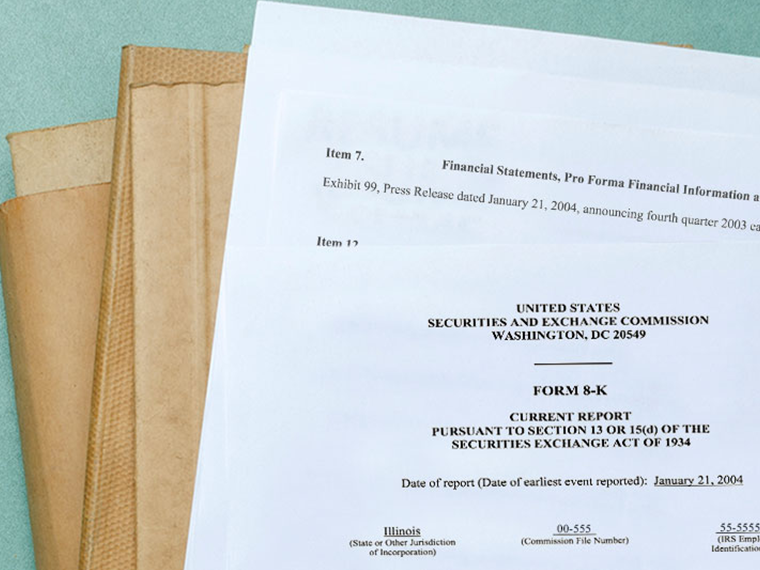Including intangible assets in book value vastly improves the strategy’s returns
Value investing has been taking it on the chin for more than a decade.
Since March 2009, when the financial crisis-induced bear market ended, an index of U.S. large capitalization value stocks has registered an annualized 16.0% return. Large capitalization growth stocks are up an annualized 20.7% during the same stretch.
The chasm between value and growth investing has been even deeper of late. In 2020, the value index gained 2.18%, while the growth index motored to a gain of 40.01%. That has, unsurprisingly, raised the volume ever higher on the “value investing is dead” chorus.
Opt In to the Review Monthly Email Update.
UCLA Anderson’s Andrea Eisfeldt and Edward Kim, a Ph.D student, and Northwestern’s Dimitris Papanikolaou suggest that, far from dead, the value factor identified by Eugene Fama and Kenneth French in 1992 is just in need of an upgrade. In a working paper published by the National Bureau of Economic Research, they find that adding intangible assets to the classic calculation of book value delivers superior performance.
In the search for undervalued stocks, a common screen is price-to-book value (the ratio of the market’s estimation of a company’s worth to the stated, after depreciation and other adjustments, value of its net assets on the balance sheet).
Testing the New Approach Over 43 Years
In the words of the authors, book value is the “fundamental anchor” used to “determine which stocks are priced ‘expensively’ vs. ‘cheaply’ relative to their fundamental value.” But book value excludes most intangible assets and, as intangibles — customer data, inventory management systems and other intellectual capital included — have come to represent half or more of corporate capital, book value’s worth as a tool has diminished.
Using 43 years of market data through 2018, Eisfeldt, Kim and Papanikolaou compare the performance of the traditional Fama French value factor (classic value factor) with their updated calculation that adds intangible assets to the value factor (intangible value factor). The authors note that the two approaches are “highly correlated,” yet their reboot has enough variation from the traditional to allow it to outperform. This outperformance has been consistent over those 43 years when back tested.
The researchers compare the performance of their intangible value factor with the traditional value factor via two separate methods. First, they effectively bought the intangible value factor while short selling the traditional value factor. The returns of this long-short portfolio type demonstrate the difference in performance between the two sides of the trades. Creating this portfolio entailed buying the companies identified as top firms when sorted by their intangible value factor and short selling the companies identified as the bottom firms when sorted by their intangible value factor. The exact opposite was done for the top and bottom firms sorted by the Fama French traditional value factor.
In a second method, only the firms that were identified as top firms by their intangible value factor, but not by the traditional value factor, were bought and only the firms that were identified as bottom firms by their intangible value factor, but not the traditional factor, were short sold.
Effectively betting on the intangible value metric over the traditional metric with the first method delivers an average annual outperformance of 2.4 percentage points over the entire 43-year period they study, and that more than doubles to an average annual return of 5.15 percentage points with the second method.
Since the financial crisis, the advantage of the intangible value factor over the traditional value factor is even more pronounced with an average annual return of 3.26% with the first method and 9.23% with the second method, over the years 2007 to 2018.
Eisfeldt, Kim and Papanikolaou performed robustness checks for their intangible value factor, measuring its performance within industries and across industries while following the methodology set out by Fama and French for constructing book value.
The researchers suggest that their intangible value factor better identifies firms with superior fundamentals such as productivity, profitability, financial soundness and on other valuation ratios such as price-earnings or price-sales. Those firms uniquely appearing in the top of the rankings with the new factor but not appearing in the top when ranked by the traditional value factor, tend to have better fundamentals.
Intangible Evidence
Eisfeldt, Kim and Papanikolaou’s findings complement a seismic shift in the building blocks of corporate valuation over the past five decades. When Fama and French landed on their seminal three-factor asset pricing model in 1992, intangible assets weren’t a very big deal. Flash forward to the tech-dominated global economy today and intangible assets such as intellectual property, customer data, copyrights, research and development expenditures, and brand recognition are now the dominant corporate assets.
The researchers’ work suggests that investors can carve out enhanced gains by moving from the traditional value factor to an intangible value factor. As long as the value investors continue to use a value factor only relying on book assets and not intangible value, an opportunity remains to benefit from this “mispricing” of firm value.
Featured Faculty
-
Andrea L. Eisfeldt
Laurence D. and Lori W. Fink Endowed Chair in Finance and Professor of Finance
About the Research
Eisfeldt, A. L., Kim, E., & Papanikolaou, D. (2020). Intangible Value.






